Zecheng Tang
Revealing and Mitigating Over-Attention in Knowledge Editing
Feb 20, 2025Abstract:Large Language Models have demonstrated superior performance across a wide range of tasks, but they still exhibit undesirable errors due to incorrect knowledge learned from the training data. To avoid this, knowledge editing methods emerged to precisely edit the specific model knowledge via efficiently modifying a very small percentage of parameters. % However, those methods can lead to the problem of Specificity Failure: when the content related to the edited knowledge occurs in the context, it can inadvertently corrupt other pre-existing knowledge. However, those methods can lead to the problem of Specificity Failure, where the existing knowledge and capabilities are severely degraded due to editing. Our preliminary indicates that Specificity Failure primarily stems from the model's attention heads assigning excessive attention scores to entities related to the edited knowledge, thereby unduly focusing on specific snippets within the context, which we denote as the Attention Drift phenomenon. To mitigate such Attention Drift issue, we introduce a simple yet effective method Selective Attention Drift Restriction}(SADR), which introduces an additional regularization term during the knowledge editing process to restrict changes in the attention weight distribution, thereby preventing undue focus on the edited entity. Experiments on five frequently used strong LLMs demonstrate the effectiveness of our method, where SADR can significantly mitigate Specificity Failure in the predominant knowledge editing tasks.
OmniGuard: Hybrid Manipulation Localization via Augmented Versatile Deep Image Watermarking
Dec 02, 2024



Abstract:With the rapid growth of generative AI and its widespread application in image editing, new risks have emerged regarding the authenticity and integrity of digital content. Existing versatile watermarking approaches suffer from trade-offs between tamper localization precision and visual quality. Constrained by the limited flexibility of previous framework, their localized watermark must remain fixed across all images. Under AIGC-editing, their copyright extraction accuracy is also unsatisfactory. To address these challenges, we propose OmniGuard, a novel augmented versatile watermarking approach that integrates proactive embedding with passive, blind extraction for robust copyright protection and tamper localization. OmniGuard employs a hybrid forensic framework that enables flexible localization watermark selection and introduces a degradation-aware tamper extraction network for precise localization under challenging conditions. Additionally, a lightweight AIGC-editing simulation layer is designed to enhance robustness across global and local editing. Extensive experiments show that OmniGuard achieves superior fidelity, robustness, and flexibility. Compared to the recent state-of-the-art approach EditGuard, our method outperforms it by 4.25dB in PSNR of the container image, 20.7% in F1-Score under noisy conditions, and 14.8% in average bit accuracy.
LOGO -- Long cOntext aliGnment via efficient preference Optimization
Oct 24, 2024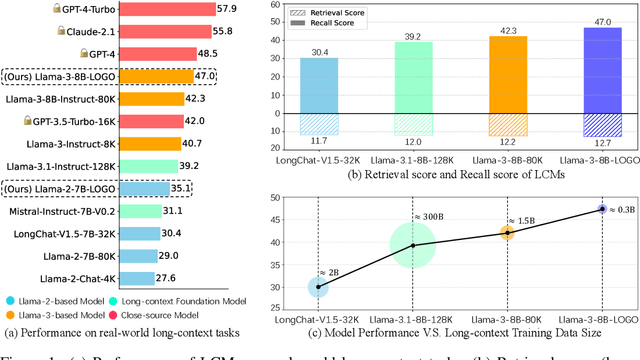
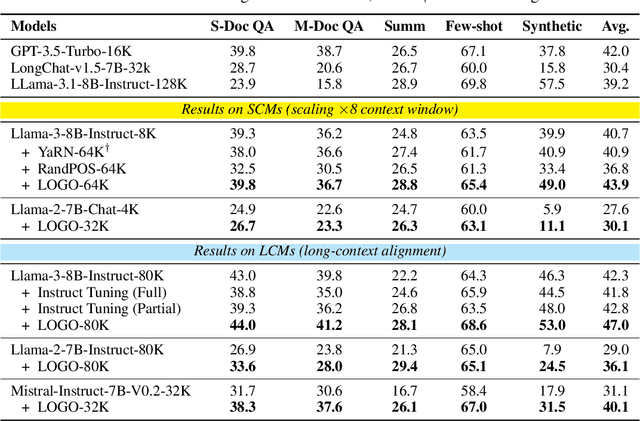
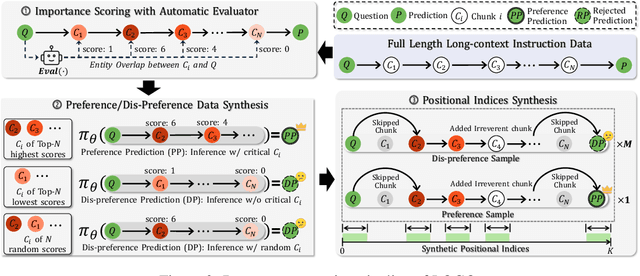
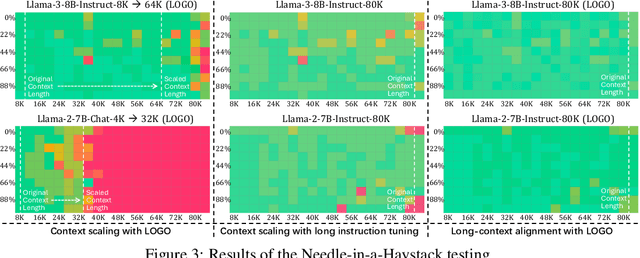
Abstract:Long-context models(LCMs) have shown great potential in processing long input sequences(even more than 100M tokens) conveniently and effectively. With significant progress, recent research has pointed out that LCMs can accurately locate token-level salient information within the context. Yet, the generation performance of these LCMs is far from satisfactory and might result in misaligned responses, such as hallucinations. To enhance the generation capability of LCMs, existing works have investigated the effects of data size and quality for both pre-training and instruction tuning. Though achieving meaningful improvement, previous methods fall short in either effectiveness or efficiency. In this paper, we introduce LOGO(Long cOntext aliGnment via efficient preference Optimization), a training strategy that first introduces preference optimization for long-context alignment. To overcome the GPU memory-bound issue caused by the long sequence, LOGO employs a reference-free preference optimization strategy and adopts a position synthesis method to construct the training data. By training with only 0.3B data on a single 8$\times$A800 GPU machine for 16 hours, LOGO allows the Llama-3-8B-Instruct-80K model to achieve comparable performance with GPT-4 in real-world long-context tasks while preserving the model's original capabilities on other tasks, e.g., language modeling and MMLU. Moreover, LOGO can extend the model's context window size while enhancing its generation performance.
Revealing and Mitigating the Local Pattern Shortcuts of Mamba
Oct 21, 2024Abstract:Large language models (LLMs) have advanced significantly due to the attention mechanism, but their quadratic complexity and linear memory demands limit their performance on long-context tasks. Recently, researchers introduced Mamba, an advanced model built upon State Space Models(SSMs) that offers linear complexity and constant memory. Although Mamba is reported to match or surpass the performance of attention-based models, our analysis reveals a performance gap: Mamba excels in tasks that involve localized key information but faces challenges with tasks that require handling distributed key information. Our controlled experiments suggest that this inconsistency arises from Mamba's reliance on local pattern shortcuts, which enable the model to remember local key information within its limited memory but hinder its ability to retain more dispersed information. Therefore, we introduce a global selection module into the Mamba model to address this issue. Experiments on both existing and proposed synthetic tasks, as well as real-world tasks, demonstrate the effectiveness of our method. Notably, with the introduction of only 4M extra parameters, our approach enables the Mamba model(130M) to achieve a significant improvement on tasks with distributed information, increasing its performance from 0 to 80.54 points.
L-CiteEval: Do Long-Context Models Truly Leverage Context for Responding?
Oct 03, 2024



Abstract:Long-context models (LCMs) have made remarkable strides in recent years, offering users great convenience for handling tasks that involve long context, such as document summarization. As the community increasingly prioritizes the faithfulness of generated results, merely ensuring the accuracy of LCM outputs is insufficient, as it is quite challenging for humans to verify the results from the extremely lengthy context. Yet, although some efforts have been made to assess whether LCMs respond truly based on the context, these works either are limited to specific tasks or heavily rely on external evaluation resources like GPT-4.In this work, we introduce L-CiteEval, a comprehensive multi-task benchmark for long-context understanding with citations, aiming to evaluate both the understanding capability and faithfulness of LCMs. L-CiteEval covers 11 tasks from diverse domains, spanning context lengths from 8K to 48K, and provides a fully automated evaluation suite. Through testing with 11 cutting-edge closed-source and open-source LCMs, we find that although these models show minor differences in their generated results, open-source models substantially trail behind their closed-source counterparts in terms of citation accuracy and recall. This suggests that current open-source LCMs are prone to responding based on their inherent knowledge rather than the given context, posing a significant risk to the user experience in practical applications. We also evaluate the RAG approach and observe that RAG can significantly improve the faithfulness of LCMs, albeit with a slight decrease in the generation quality. Furthermore, we discover a correlation between the attention mechanisms of LCMs and the citation generation process.
FakeShield: Explainable Image Forgery Detection and Localization via Multi-modal Large Language Models
Oct 03, 2024
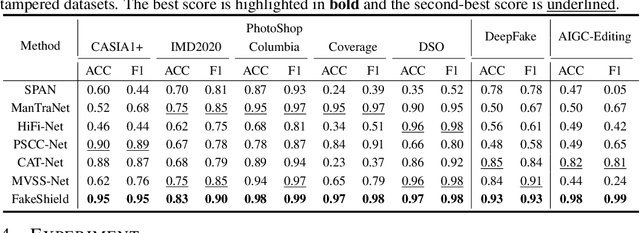
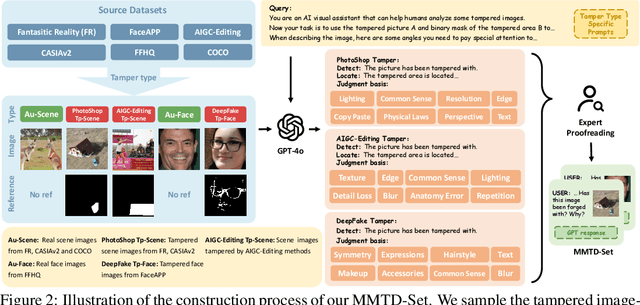

Abstract:The rapid development of generative AI is a double-edged sword, which not only facilitates content creation but also makes image manipulation easier and more difficult to detect. Although current image forgery detection and localization (IFDL) methods are generally effective, they tend to face two challenges: \textbf{1)} black-box nature with unknown detection principle, \textbf{2)} limited generalization across diverse tampering methods (e.g., Photoshop, DeepFake, AIGC-Editing). To address these issues, we propose the explainable IFDL task and design FakeShield, a multi-modal framework capable of evaluating image authenticity, generating tampered region masks, and providing a judgment basis based on pixel-level and image-level tampering clues. Additionally, we leverage GPT-4o to enhance existing IFDL datasets, creating the Multi-Modal Tamper Description dataSet (MMTD-Set) for training FakeShield's tampering analysis capabilities. Meanwhile, we incorporate a Domain Tag-guided Explainable Forgery Detection Module (DTE-FDM) and a Multi-modal Forgery Localization Module (MFLM) to address various types of tamper detection interpretation and achieve forgery localization guided by detailed textual descriptions. Extensive experiments demonstrate that FakeShield effectively detects and localizes various tampering techniques, offering an explainable and superior solution compared to previous IFDL methods.
MemLong: Memory-Augmented Retrieval for Long Text Modeling
Aug 30, 2024Abstract:Recent advancements in Large Language Models (LLMs) have yielded remarkable success across diverse fields. However, handling long contexts remains a significant challenge for LLMs due to the quadratic time and space complexity of attention mechanisms and the growing memory consumption of the key-value cache during generation. This work introduces MemLong: Memory-Augmented Retrieval for Long Text Generation, a method designed to enhance the capabilities of long-context language modeling by utilizing an external retriever for historical information retrieval. MemLong combines a non-differentiable ``ret-mem'' module with a partially trainable decoder-only language model and introduces a fine-grained, controllable retrieval attention mechanism that leverages semantic-level relevant chunks. Comprehensive evaluations on multiple long-context language modeling benchmarks demonstrate that MemLong consistently outperforms other state-of-the-art LLMs. More importantly, MemLong can extend the context length on a single 3090 GPU from 4k up to 80k. Our code is available at https://github.com/Bui1dMySea/MemLong
OpenBA-V2: Reaching 77.3% High Compression Ratio with Fast Multi-Stage Pruning
May 09, 2024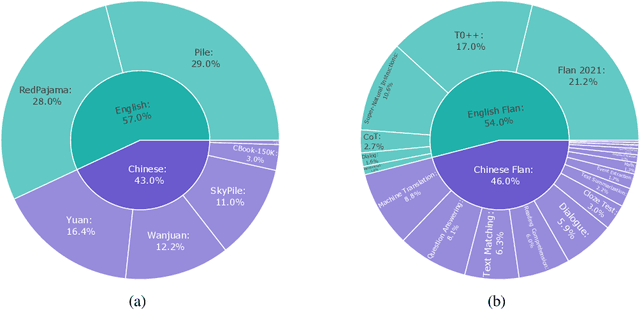

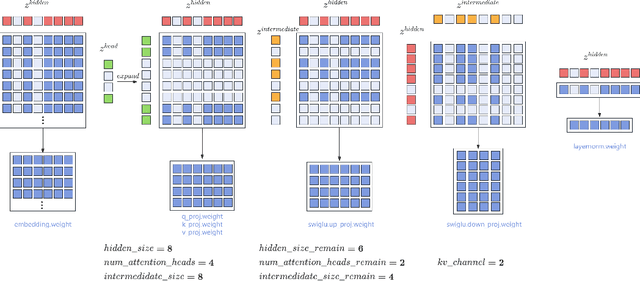
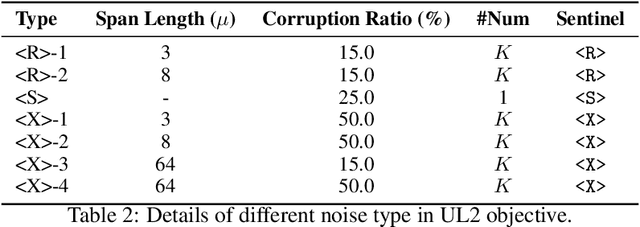
Abstract:Large Language Models (LLMs) have played an important role in many fields due to their powerful capabilities.However, their massive number of parameters leads to high deployment requirements and incurs significant inference costs, which impedes their practical applications. Training smaller models is an effective way to address this problem. Therefore, we introduce OpenBA-V2, a 3.4B model derived from multi-stage compression and continual pre-training from the original 15B OpenBA model. OpenBA-V2 utilizes more data, more flexible training objectives, and techniques such as layer pruning, neural pruning, and vocabulary pruning to achieve a compression rate of 77.3\% with minimal performance loss. OpenBA-V2 demonstrates competitive performance compared to other open-source models of similar size, achieving results close to or on par with the 15B OpenBA model in downstream tasks such as common sense reasoning and Named Entity Recognition (NER). OpenBA-V2 illustrates that LLMs can be compressed into smaller ones with minimal performance loss by employing advanced training objectives and data strategies, which may help deploy LLMs in resource-limited scenarios.
Rethinking Negative Instances for Generative Named Entity Recognition
Feb 26, 2024



Abstract:Large Language Models (LLMs) have demonstrated impressive capabilities for generalizing in unseen tasks. In the Named Entity Recognition (NER) task, recent advancements have seen the remarkable improvement of LLMs in a broad range of entity domains via instruction tuning, by adopting entity-centric schema. In this work, we explore the potential enhancement of the existing methods by incorporating negative instances into training. Our experiments reveal that negative instances contribute to remarkable improvements by (1) introducing contextual information, and (2) clearly delineating label boundaries. Furthermore, we introduce a novel and efficient algorithm named Hierarchical Matching, which is tailored to transform unstructured predictions into structured entities. By integrating these components, we present GNER, a Generative NER system that shows improved zero-shot performance across unseen entity domains. Our comprehensive evaluation illustrates our system's superiority, surpassing state-of-the-art (SoTA) methods by 11 $F_1$ score in zero-shot evaluation.
StrokeNUWA: Tokenizing Strokes for Vector Graphic Synthesis
Jan 30, 2024Abstract:To leverage LLMs for visual synthesis, traditional methods convert raster image information into discrete grid tokens through specialized visual modules, while disrupting the model's ability to capture the true semantic representation of visual scenes. This paper posits that an alternative representation of images, vector graphics, can effectively surmount this limitation by enabling a more natural and semantically coherent segmentation of the image information. Thus, we introduce StrokeNUWA, a pioneering work exploring a better visual representation ''stroke tokens'' on vector graphics, which is inherently visual semantics rich, naturally compatible with LLMs, and highly compressed. Equipped with stroke tokens, StrokeNUWA can significantly surpass traditional LLM-based and optimization-based methods across various metrics in the vector graphic generation task. Besides, StrokeNUWA achieves up to a 94x speedup in inference over the speed of prior methods with an exceptional SVG code compression ratio of 6.9%.
 Add to Chrome
Add to Chrome Add to Firefox
Add to Firefox Add to Edge
Add to Edge